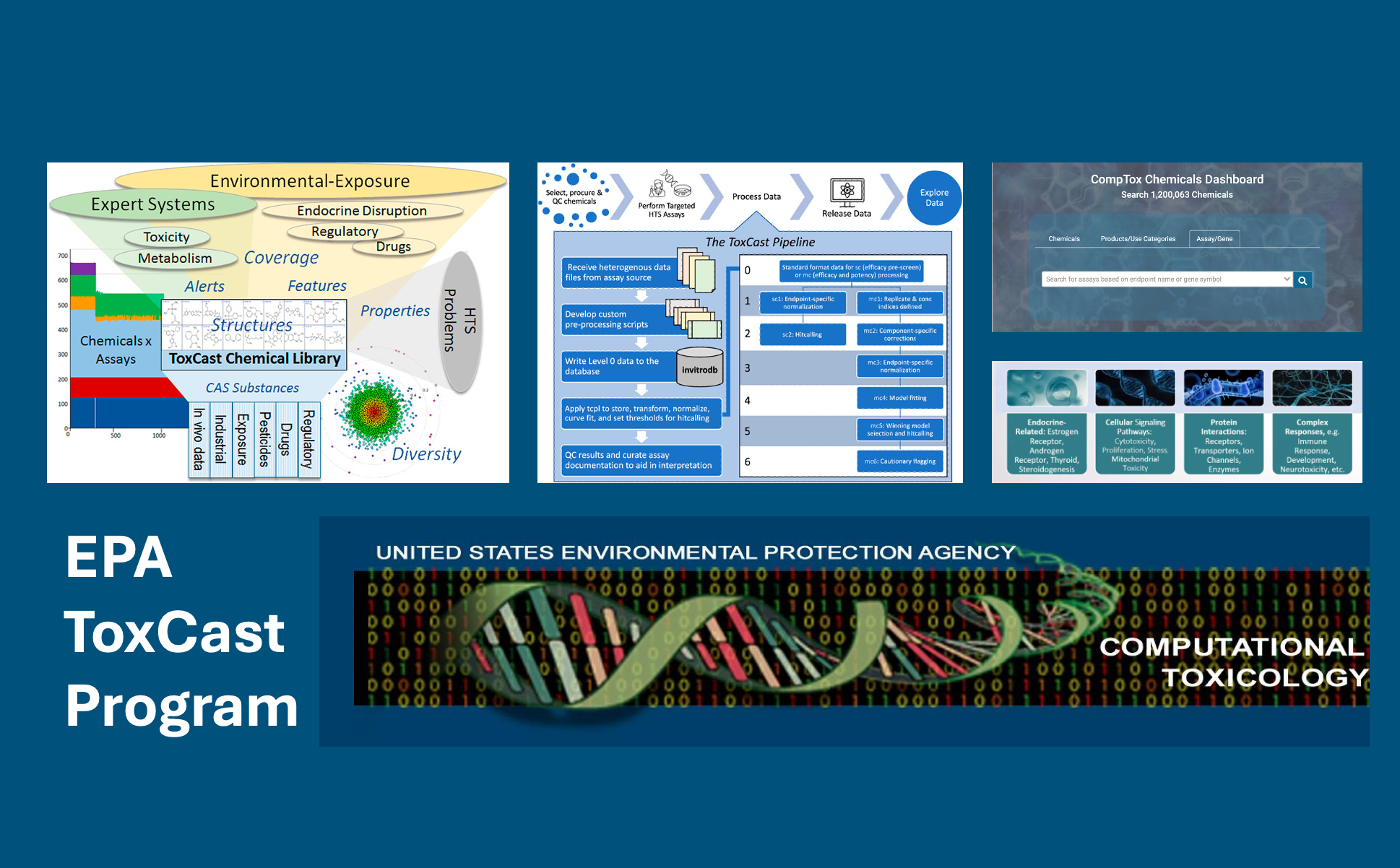Recent Updates to EPA’s ToxCast Program – and Why We Care

The ToxCast program (Toxicity Forecaster) is a long running research program at the US EPA that has been steadily supporting alternatives to animals since 2007. The ToxCast program has generated data for >9500 chemicals across 625 assays (1496 endpoints). This data (now included in the Tox21 program) is housed in EPA’s In Vitro Database (invitroDB) and viewable through the CompTox Chemicals Dashboard (CCD).
The ToxCast team at EPA has been working on making their data meet the FAIR principles (Findable, Accessible, Interoperable and Reusable). In a recent webinar, EPA scientists, Katie Paul-Friedman, Jason Brown, Sarah Davidson-Fritz and Madison Feshuk, described updates to the ToxCast program data analysis pipeline, as a follow up to their publication from last year (Feshuk et al., 2023).
Changes in the latest versions of the database (invitroDB v4.1) and analysis pipeline (tcpl v3.0) include updates on curve-fitting models, plotting, hit calling, potency estimates, and (at long last!) endpoint directionality.
About the ToxCast Program
The ToxCast Program was initiated in 2007 following the publication of the seminal report, Toxicity Testing in the 21st Century, to identify high throughput assays (now known as in vitro NAMs or New Approach Methodologies) that could be applied for the development of toxicity prediction models to prioritize the large numbers of chemicals with limited or no in vivo animal toxicity data.
Included in the original nine platforms selected by the EPA for the ToxCast program was the BioMAP® platform from BioSeek (now a service through Eurofins Discovery). Kudos to the program leaders at the time, Bob Kavlock, David Dix and Keith Houck, who were willing to consider human primary cell-based assays. These assay systems (known as the “BSK” assays in the CCD database) are rich in biology. They include co-cultures and feature stimulation conditions that activate physiologically relevant adaptive mechanisms.
ToxCast Assays in Combinatorial NAMs
One of the key learnings from the ToxCast program was the understanding that individual assays do not stand alone for decision making. In early studies, ToxCast assays were found to have limited value on an individual basis for predicting in vivo outcomes (Thomas et al., 2012). We now appreciate their greater value as components of combinatorial approaches. Combinatorial approaches or combination NAMs are strategic combinations of individual assays or NAMs (e.g., one or more in vitro, biochemical and/or in silico-based methods). Indeed, in recent years, new approaches to the analysis of BioMAP assay data identified combinations of specific assays (or “signatures”) to be useful in classifying compounds with potential for certain human toxicities as well as problematic mechanisms (Berg, 2021; Berg et al., 2019). Combinatorial NAMs have been recognized as a research priority by the NIH’s ACD Working Group on NAMs as well as by Complement-ARIE, a newly approved program of the NIH Common Fund (see slides here).
Assay Metadata Annotation Will Be Important
To fully leverage the ToxCast data in combination approaches, additional work will be needed to better capture the biological context of assays. Various efforts to annotate ToxCast and related assays using standardized ontologies have been made by EPA, NIEHS, the Pistoia Alliance and others (see Karmaus et al., 2023; Phuong et al., 2014; and Vanderwall and Makarov, 2023), as well as ourselves. There is plenty of opportunity for creativity and innovation around metadata annotation of bioassays. This will be needed to fully leverage these data sets for data science applications including predictive models and incorporation into AI/ML approaches.
We can all look forward to continued progress by the ToxCast team.







